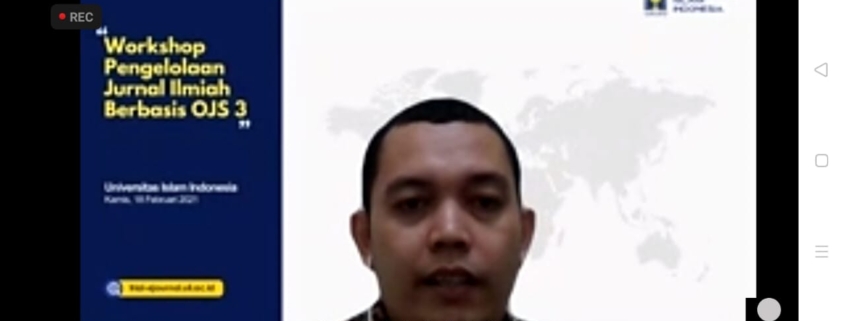Improving Journal Performance and Flexibility by Migrating to OJS 3
Journal Managers at UII have started to carry out a series of trainings to update the quality of service and substance of journal manuscripts. For example, some time ago, journal managers invited assessors from LLDikti to assess the quality of journals for accreditation / re-accreditation.
Now, the training entitled “Workshop on Management of Scientific Journals Based on OJS 3” tries to invite journal managers to understand and prepare themselves for the migration from the current version 2 of the Open Journal System (OJS) to version 3.
Yuli Andriansyah, as the workshop resource person, said in a systemic manner OJS 3 is more practical than OJS 2 in use today. OJS 3 emphasized that they are now more responsive and have a feedback concept. This feedback means, “chatting with this author is more flexible,” he said. “In fact, we can communicate directly between roles in a group at OJS,” said Yuli, who is also a lecturer at FIAI UII, this Thursday (18/2/2021).
According to Yuli, migration is a necessity. Sooner or later, all journals will of course migrate, responding to a question by one of the participants.
“Is it necessary for a new journal to use OJS 3?” Asked As’ad Royan, one of the participants from the Journal and Publication Unit of FPSB UII’s Scientific Works, through the chat column on the Zoom Meeting application.
“I am not the person who can decide that. But I suggest that if we see OJS 1 has terminated its service, and if we go to OJS 3 it is not too difficult, I think there is nothing to lose if we migrate directly to OJS 3,” said Yuli.
Regarding the display and recording of web visit performance statistics, Yuli explained that OJS 3 has even prepared an integrated system with Google Analytics. The view is also more beautiful, you can customize yourself. “The original OJS product is google analytics. So that the database is strong. Not a statcounter. This statcounter is a DIKTI obligation,” he said.
One other advantage, OJS 3 can add a new role, namely Language Editor. In OJS 2, the role of Language Editor is combined in the proofreader’s role.
Dodik Setiawan, Lecturer at FH UII, Journal manager at the Faculty of Law, also asked. “Can OJS 3 add WhatsApp (WA) numbers,” he asked.
“If the WA API is available, theoretically it can actually be connected with a direct WA message,” Yuli replied. OJS 3, according to Yuli, allows connection with various applications, if the application provides an API that can be accessed openly.
On another post-training occasion, Heri Sudarsono, a lecturer who manages the JEKI Journal, said that the hope of the implementation of this workshop is that it can be followed up with the next few OJS workshops. “Our target is increasingly confident and motivated to migrate to OJS 3,” he said optimistically.
According to Heri, after receiving an explanation from the resource person, he was of the opinion that by using the OJS 3 system, the scriptures could be accounted for. “Pak Yuli’s explanation that OJS 3 is very good,” he said.
Heri also added that the internal team at the university level would try to formulate a migration model for all journals in UII. This formula tries to consider the various risks that might be faced. Including the security and data loss constraints and risks that were asked by some of the participants.




